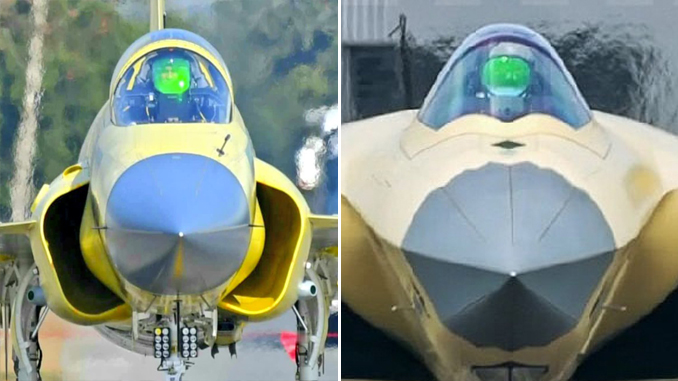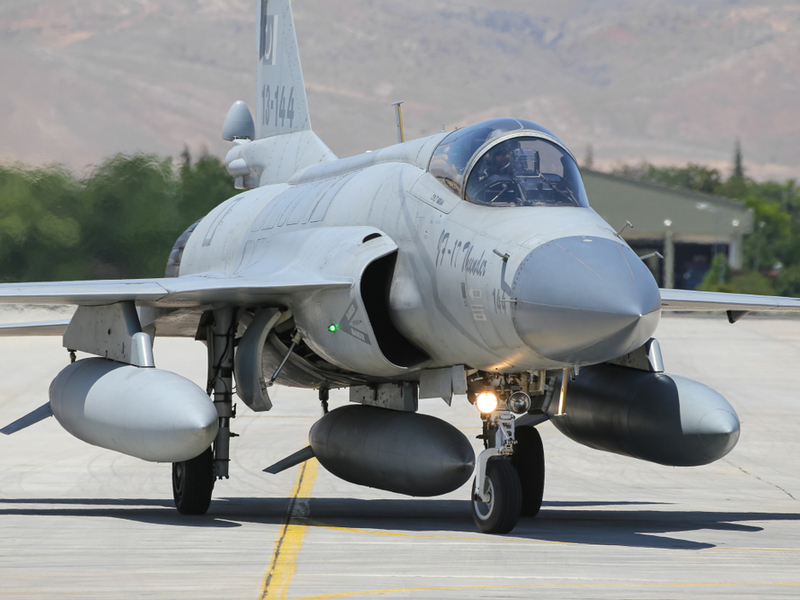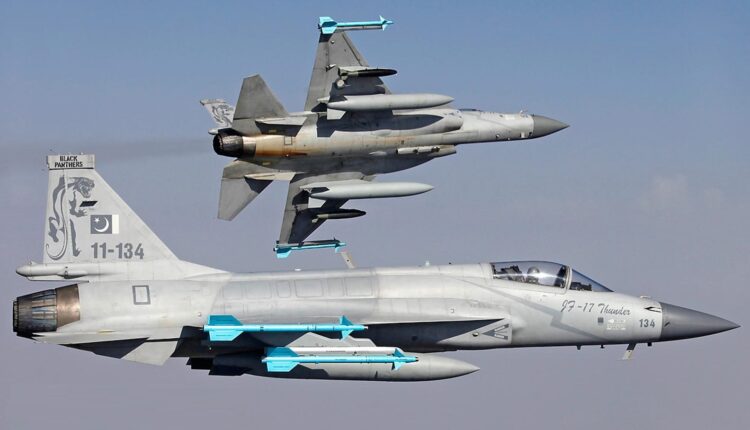Turkey Contemplates China-Pakistan JF-17 “Thunder”?
While Turkey's neighboring state, Greece, is being "reinforced" by the United States and France through the acquisition of F-35 and Rafale aircraft, Turkey finds itself in a pressing situation, necessitating the prompt procurement of fighter aircraft. This urgency is particularly crucial until the indigenous fifth-generation "KAAN" fighter, currently under development, becomes operational in 2028 and beyond.
(DEFENCE SECURITY ASIA) — Turkish exclusion from the F-35 development program and the impediment from acquiring the Eurofighter Typhoon as well as F-16 Block 70 have prompted Turkey to explore the JF-17 “Thunder”, a fighter aircraft jointly-developed by Pakistan and China, as alleged by the local media.
Developed by the Pakistan Aeronautical Complex (PAC) and Chengdu Aircraft Industry Group (CAIG), the JF-17 fighter has been touted in Turkish media as the current best option for the Mediterranean nation.
Despite opinions favoring Russian fighters like the Su-35 as Ankara’s optimal choice, acquiring the Su-35 would strain Turkey’s relations with other NATO member countries, especially the United States, similar to the repercussions faced after obtaining the S-400 “Triumf” air defense system, resulting in expulsion from the F-35 program.
While Turkey’s neighboring state, Greece, is being “reinforced” by the United States and France through the acquisition of F-35 and Rafale aircraft, Turkey finds itself in a pressing situation, necessitating the prompt procurement of fighter aircraft.
This urgency is particularly crucial until the indigenous fifth-generation “KAAN” fighter, currently under development, becomes operational in 2028 and beyond.

Turkey indigenous fifth-generation “KAAN” fighter scheduled to becomes operational in 2028 and beyond, with its inaugural flight expected this coming December 27.
Should Turkey indeed choose the JF-17 “Thunder” as an alternative following unsuccessful attempts to acquire 40 Eurofighter Typhoons and 40 F-16 Block 70s, national media suggests considering the latest variant, the JF-17 Block 3.
Analysts describe this variant as comparable to fourth-generation+++ fighters.
In total, the Pakistan Air Force is anticipated to possess around 50 JF-17 Block 3 aircraft by 2024, supplementing the existing fleet of 98 JF-17 Block 1 and Block 2 aircraft. The JF-17 Block 3 is reported to share DNA features with China’s fifth-generation J-20 “Mighty Dragon” fighter.
Distinguished by its modern capabilities, the JF-17 Block 3, equipped with the China Electronics Technology Group-developed Active Electronically Scanned Array (AESA) radar “KLJ-7A,” is hailed by Chinese military analysts as on par with the radar systems of the U.S. F-35 (AN/APG-81) and the Russian Su-57 (N036 phased array radar).


The latest JF-17 Block 3 variant also incorporates a Wide-Angle Holographic Head-Up Display, akin to the one used in China’s fifth-generation J-20 “Mighty Dragon.”
Enhancements in capabilities include the integration of an Infra-Red Missile Approach Warning System, a sensor system situated in the aircraft’s air intake, mirroring China’s J-10C fighter.
In terms of air-to-air weaponry, the JF-17 Block 3 will be equipped with two guided missile types: the PL-10, also used by China’s J-20 “Mighty Dragon,” comparable to the U.S.-made AIM-9X short-range guided missile, and the “PL-15,” with an operational range of 200 to 300 kilometers, providing a competitive edge over Indian aircraft-guided missiles. — DSA

DEFENCE SECURITY ASIA APPS
To advertise contact: lulwabyadah@gmail.com

